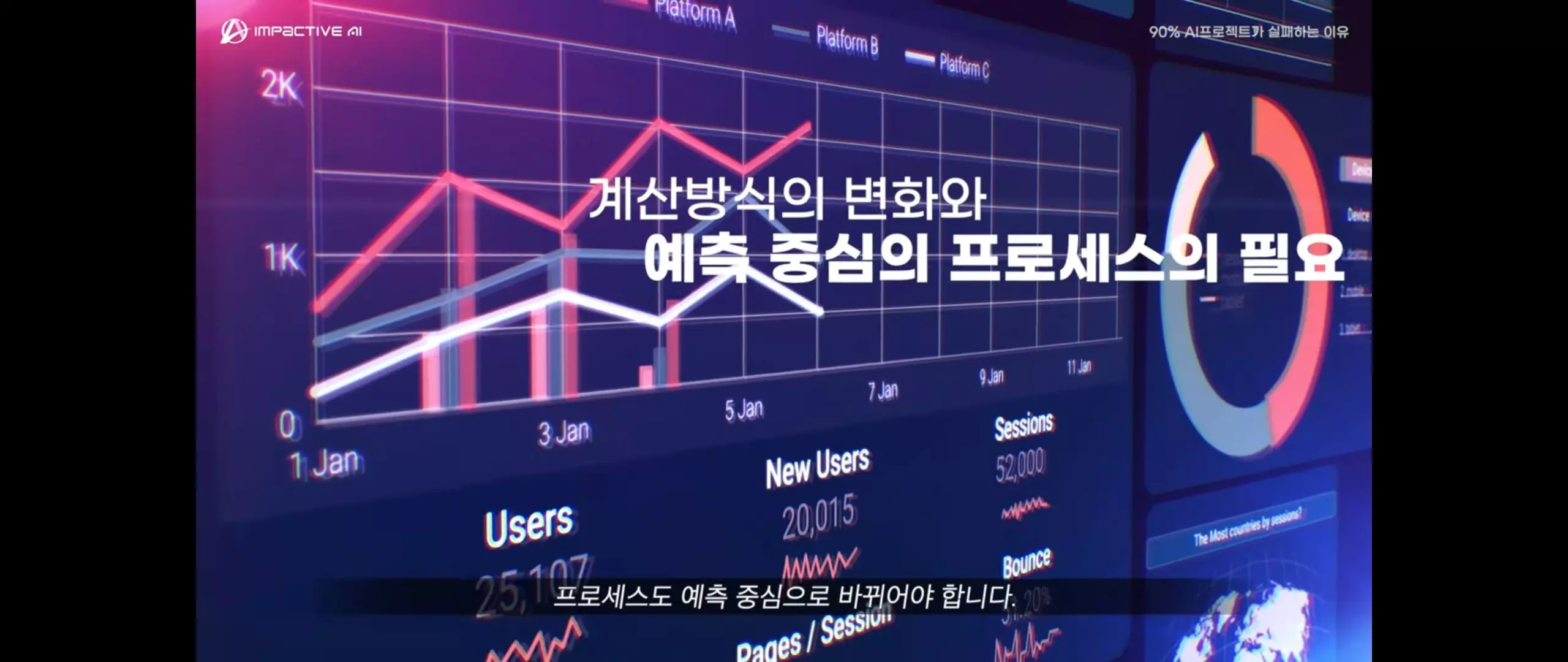Exploring Gartner's Top 10 Strategic Technology Trends

Gartner is a global company that provides research and insights on IT and technology. It conducts market research, analysis, and forecasts to help companies in various industries effectively utilize technology.
Gartner's reports and materials help companies understand technology trends and help them develop strategies. In addition, annual conferences and seminars provide opportunities for experts to share the latest technology trends and network.
In short, Gartner plays an important role in helping companies make better decisions through technology.
At the annual IT Symposium/Expo held in Orlando last October, Gartner explained that the technology trends of 2025 will include the “essentiality and risks of AI,” “new changes in computing technology,” and “synergies between humans and AI.”
In this article, I will introduce the 10 strategic technologies mentioned in the 2024 Gartner Technology Trends.
Gartner Technology Trends ① AI that has become a part of our daily lives and the risks that follow
Agentic AI

Agent AI refers to an artificial intelligence system that autonomously plans and executes to achieve user-defined goals.
It is a future technology that presents the possibility of a virtual workforce that can alleviate and augment the workload of humans. It is receiving keen interest from chief information officers (CIOs) who want to improve the productivity of their entire organization.
Gartner predicts that by 2028, agent AI will replace 15% of organizations' day-to-day business decisions. A software system that can handle a variety of tasks while being more adaptable will determine the competitiveness of agent AI.
AI Governance Platforms
The AI Governance Platform is a platform that helps manage the legal, ethical, and operational performance of AI systems. Following TRiSM AI, which was mentioned in the 2024 technology trends, the goal is to establish, manage, and implement policies for the responsible use of AI.
While public interest in artificial intelligence continues to grow, so does the voice for AI's “explainability.” AI governance platforms play an important role in explaining how the system works and showing the decision-making process transparently.
Gartner predicts that by 2028, companies that implement comprehensive AI governance platforms will be able to reduce AI-related ethical incidents by more than 40% compared to companies that do not.
Disinformation Security
Disinformation security is a technology that systematically identifies reliable information while tracking the spread of malicious disinformation.
Recently, the number of disinformation incidents targeting companies has been increasing. Therefore, as the response to disinformation becomes more important due to the development of AI and machine learning, the adoption rate of related technologies is expected to increase rapidly by 2028.
In order to build a security system for false information, technologies that guarantee the integrity of information, evaluate its authenticity, or prevent impersonation are attracting attention. There is also a discussion on a methodological system for tracking the spread of harmful information.
Spatial Computing
Spatial intelligence is a technology that fuses the physical and digital worlds, mainly through augmented reality (AR) and virtual reality (VR) technologies. It was created to enable users to interact with digital information in a physical environment, thereby increasing work efficiency and improving collaboration.
Gartner predicts that spatial intelligence will greatly improve organizational efficiency within the next five to seven years. It forecasts that the market size in this area will reach $1.7 trillion by 2033.
Gartner believes that in the near future, companies will streamline their workflows and improve their collaborative environments through spatial intelligence.
Spatial intelligence is connected to technologies such as multifunctional robots. It plays a role in making the interaction between humans and machines smoother. It is expected that companies that apply this technology will be able to use it to improve customer experience.
Gartner Technology Trend ② New Paradigm of Human-Machine Collaboration
Ambient Invisible Intelligence

Ambient intelligence refers to the technology that collects and processes information without the user's knowledge. When combined with IoT (Internet of Things) technology, which is closely connected to our lives, it automatically provides users with the information they need or monitors the environment.
Gartner believes that this technology will help reduce costs and improve efficiency in various industries. Using ambient intelligence, it is possible to build a system that can detect and automatically take action based on data in smart homes, smart factories, etc.
In particular, it is expected that cost efficiency will be greatly improved in areas such as logistics and supply chain management through real-time tracking and detection by 2028. For example, equipment and parts of manufacturers will be able to communicate with the system to report whether maintenance is required in real time.
Polyfunctional Robots
Polyfunctional robots are robots that can perform multiple tasks simultaneously, and this technology is designed to perform a single task repeatedly. For example, a single robot can perform multiple tasks such as assembly, packaging, and inspection at a manufacturing company.
These robots are designed to collaborate with humans, so they can work efficiently with humans in the work environment.
Gartner predicts that 80% of people will use multifunctional robots on a daily basis by 2030. This is a radical prediction considering that the current rate of smart robot use is less than 10%.
It is expected that the rate of use will increase rapidly as the technology develops and spreads.
However, in order for multifunctional robots to detect and respond to the environment in real time, advanced sensor technology and data processing capabilities are required.
Current technology is unable to fully meet these demands, and it will require continuous research and technological development to achieve the popularization predicted by Gartner, as it will incur significant costs.
Gartner Technology Trend 3: New Horizons in Computing
Energy-Efficient Computing

Energy-efficient computing is being mentioned as a technology essential for companies to achieve sustainability. Huge energy resources are required to train models. The focus is on saving energy in such computing-intensive tasks.
Gartner emphasizes that most IT organizations will have to consider their carbon footprint in the future and recommends that they contribute to achieving environmental protection goals through energy-efficient computing.
In particular, it is especially important to increase efficiency in tasks such as machine learning, simulation, optimization, and media rendering, as these tasks consume a lot of energy.
Gartner also predicts that new computing technologies will emerge for special-purpose tasks related to AI from the late 2020s. This technology, which applies optics, neuromorphics, and new accelerators, is expected to use much less energy than existing technologies.
Hybrid Computing
Hybrid computing is a system that solves complex computational problems by combining various computing resources such as CPUs and GPUs. It aims to overcome current technological limitations with innovative technologies such as AI.
Hybrid computing integrates multiple computing paradigms, including central processing units (CPUs), graphics processing units (GPUs), edge computing, application-specific integrated circuits, neuromorphic and quantum systems, to create an efficient computing environment.
It can be used in various fields, such as machine learning, data analysis, and simulation, and is especially useful for solving complex computational problems.
Gartner believes that companies that apply this hybrid computing will be able to implement more efficient and innovative AI workloads than those that maintain their existing environments.
Gartner Technology Trend 4: Future Technology Trends
Post-quantum Cryptography

Quantum-resistant cryptography is an encryption technology developed in response to the risk that existing encryption methods will become insecure due to the development of quantum computers. It is designed to remain secure even if quantum computers become capable of breaking existing encryption in the future.
Quantum-resistant cryptography is based on a mathematical principle different from that of existing encryption algorithms, and has a structure that cannot be easily decrypted by a quantum computer. For example, lattice-based encryption and polynomial-based encryption are applied.
It provides strong security to protect companies from data leaks and hacking, as it can prepare for future quantum computer attacks. Quantum-resistant cryptography is being applied to protect data in financial services, government agencies, and cloud services.
However, quantum-resistant cryptography is currently difficult to implement due to its complexity and compatibility issues with existing systems.
In addition, since the technology has not yet been fully optimized, there is a possibility of performance degradation, which may cause problems in systems that require real-time processing.
Neurological Enhancement
Neurological Enhancement is a technology that improves human cognitive abilities by reading and decoding brain activity. It is achieved through brain-machine interfaces (BCIs) and is used to assist or extend human cognitive functions.
The principle of this technology is to analyze electrical signals in the brain to perform a specific task or process information. It works by controlling the machine through specific thoughts or commands.
It has the advantage of maximizing human cognitive ability and enabling new forms of interaction, thereby increasing the efficiency of education and training.
Based on this technology, the medical community is actively conducting research to develop assistive devices and cognitive training programs for the disabled. It is also being used in the marketing field to analyze consumers' emotions and reactions.
However, it seems difficult to commercialize it immediately due to unresolved ethical and privacy issues.
Of the ten technologies announced by Gartner, nine have been adopted, with the exception of quantum encryption, which is related to AI. By 2030, it is expected that 30% of knowledge workers will use much more advanced AI than they do now to remain suitable for work in the workplace.
Gartner emphasized that the ten trends it presented are not only urgent for companies right now, but also potentially disruptive. In the era of artificial intelligence, Impactful AI will continue to grow in line with future technological developments.


.svg)
%202.svg)
.svg)


.svg)















